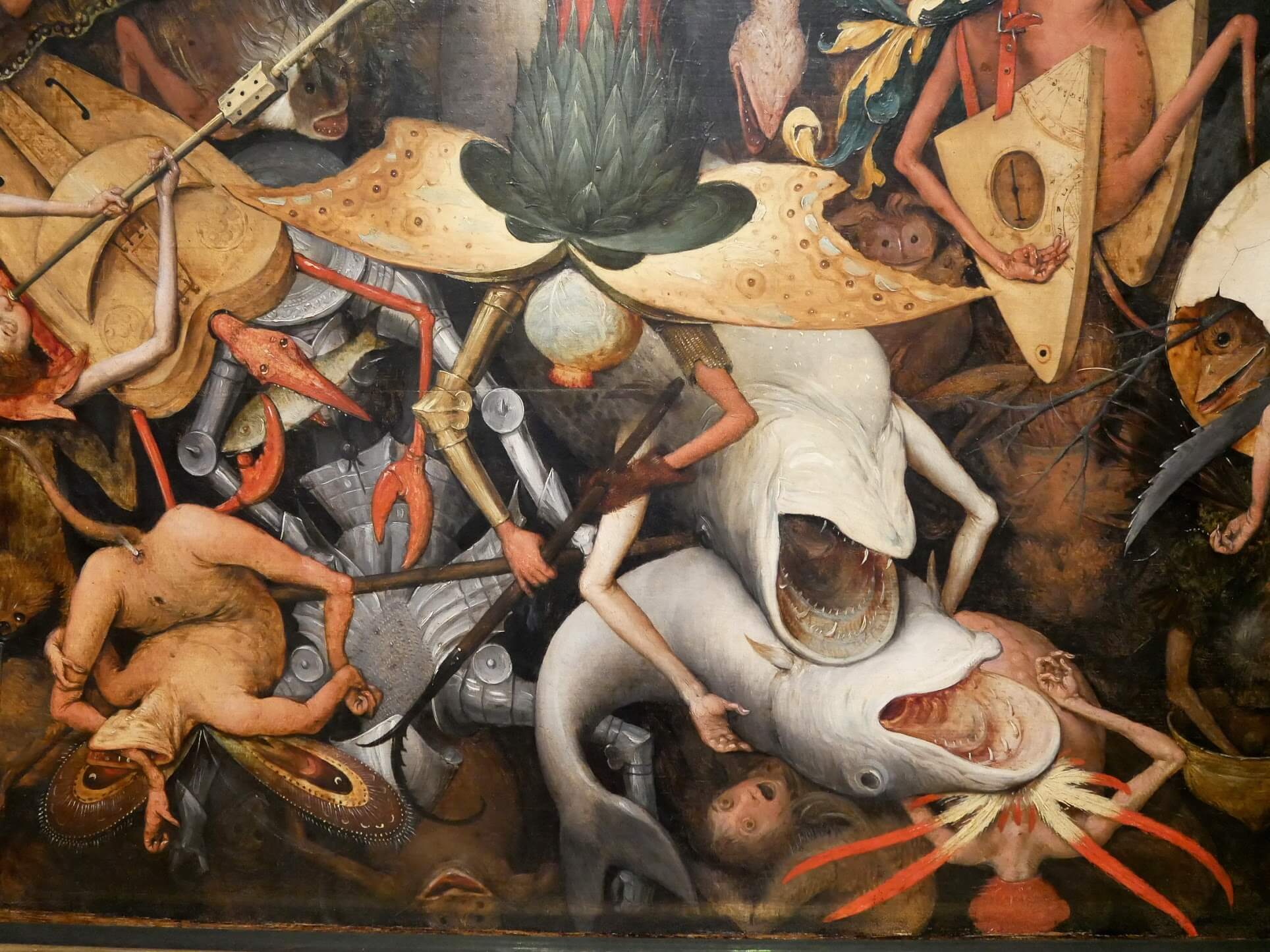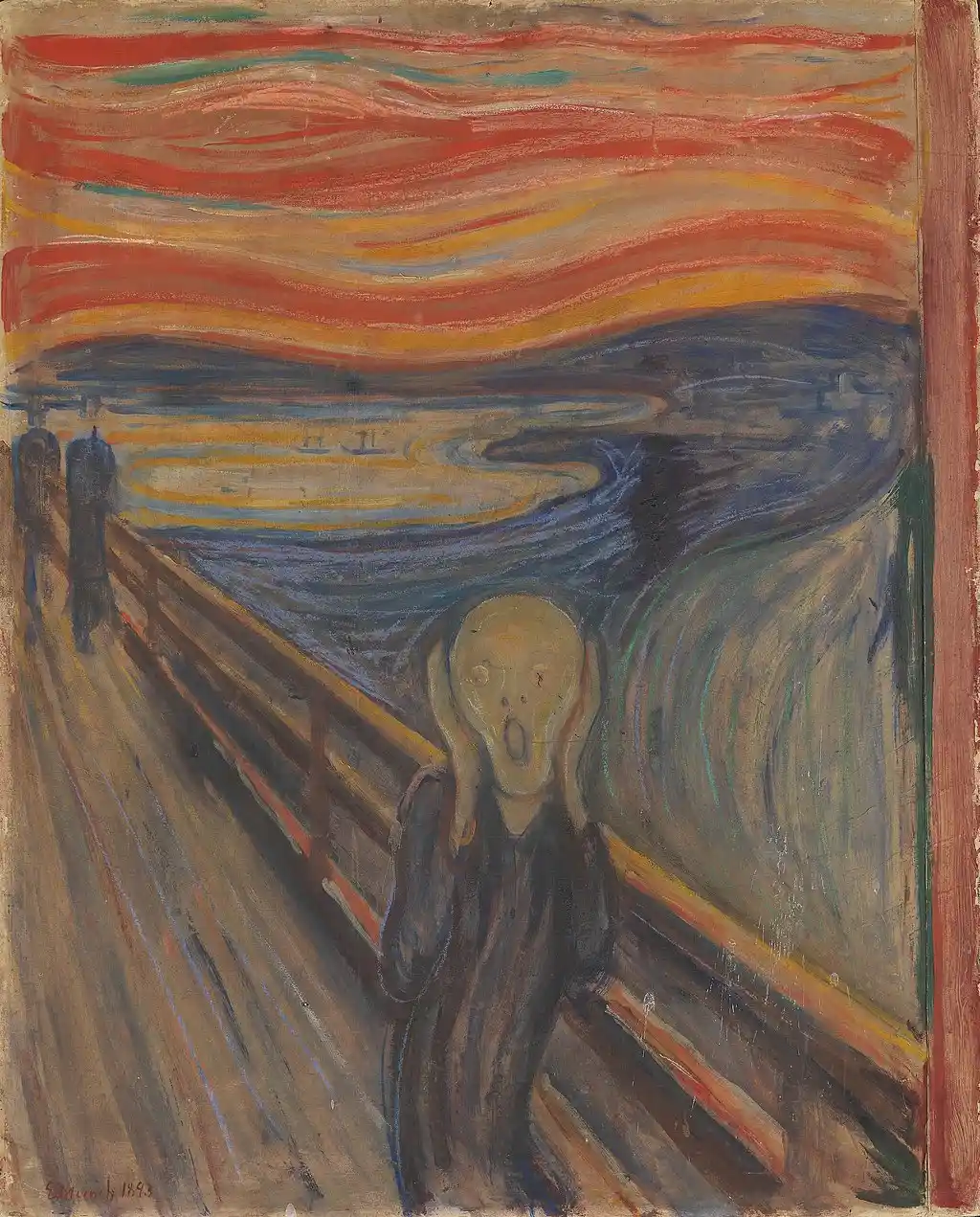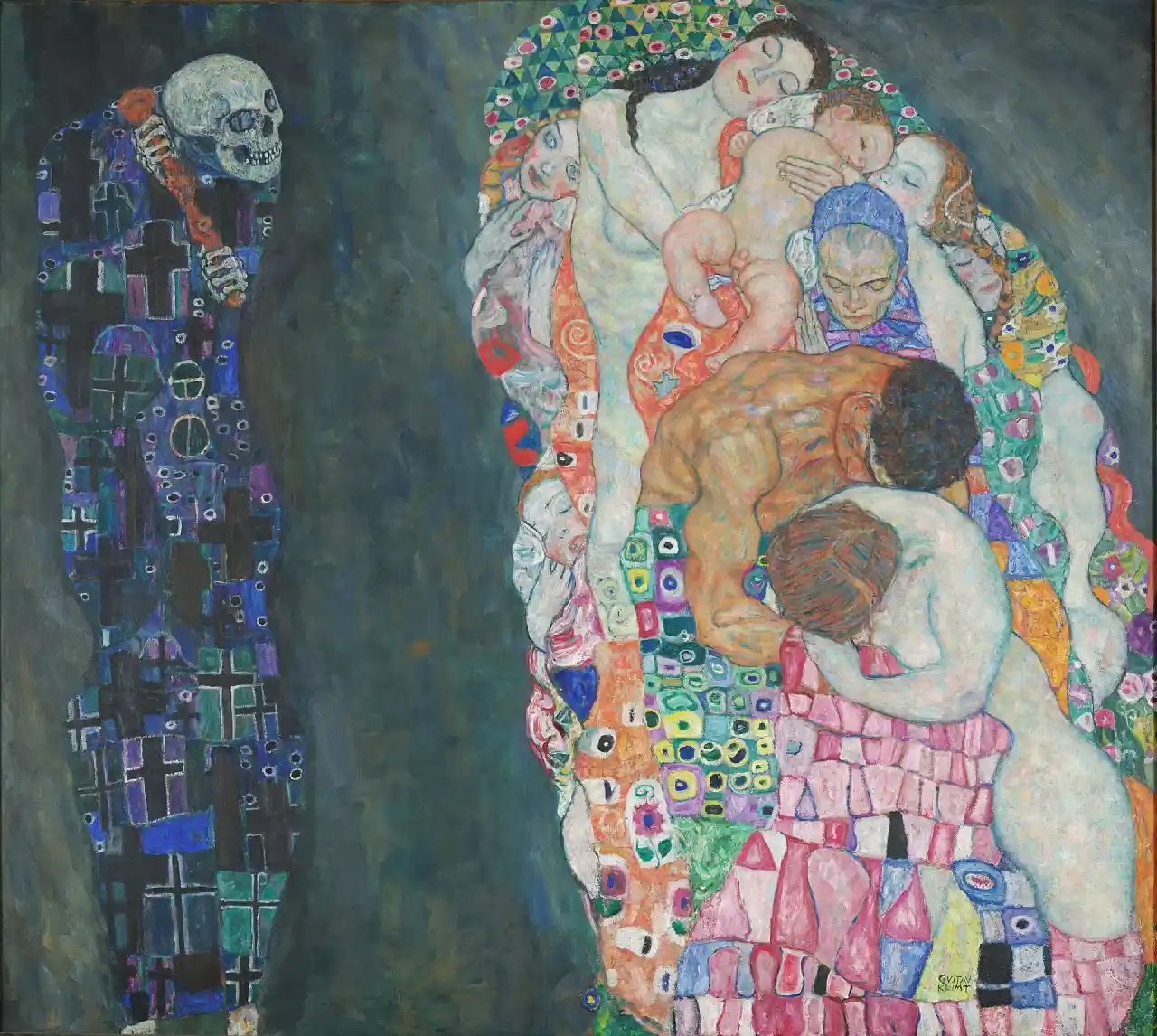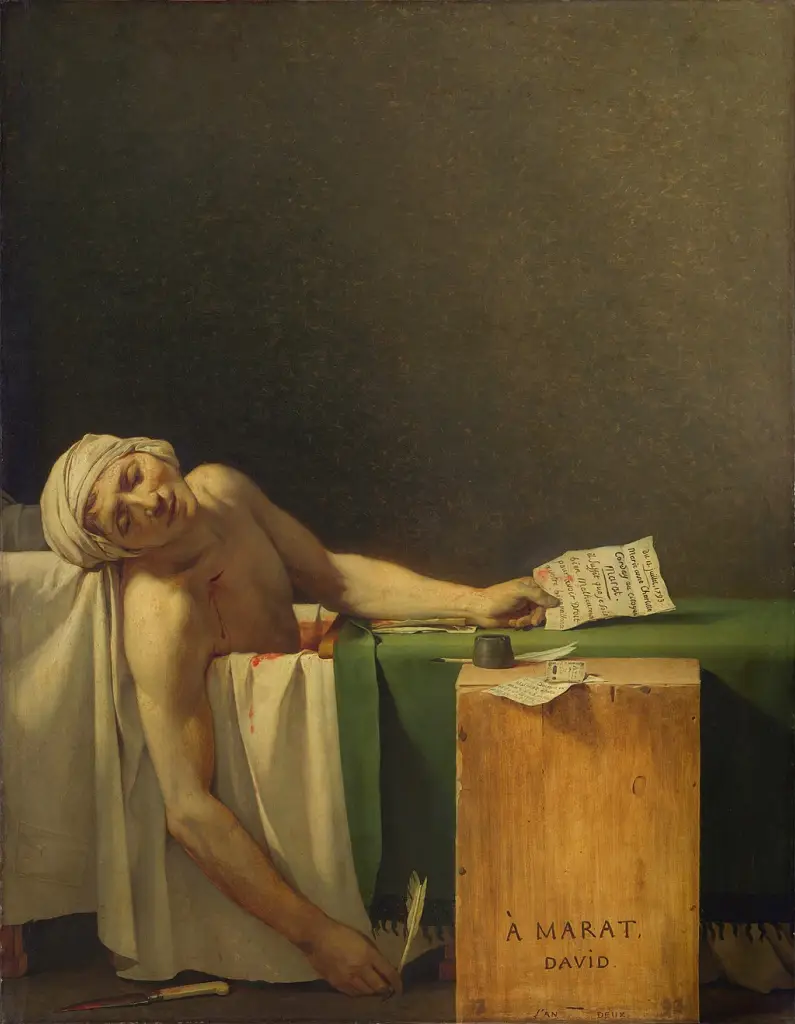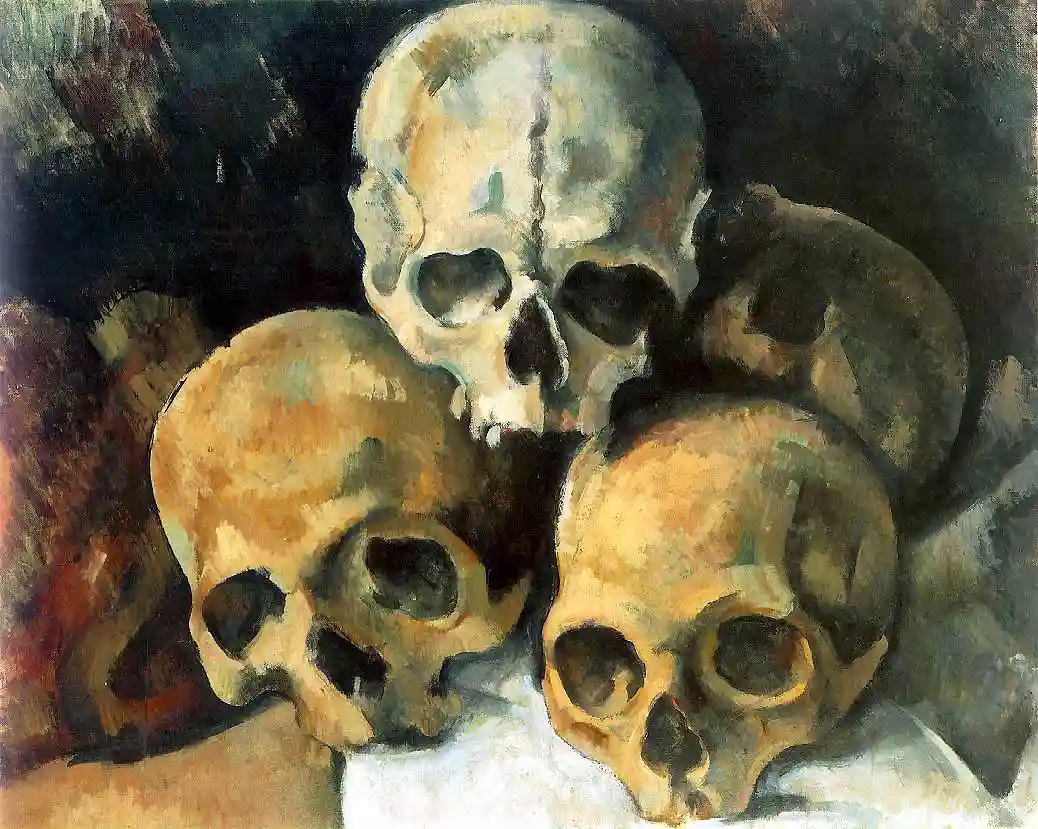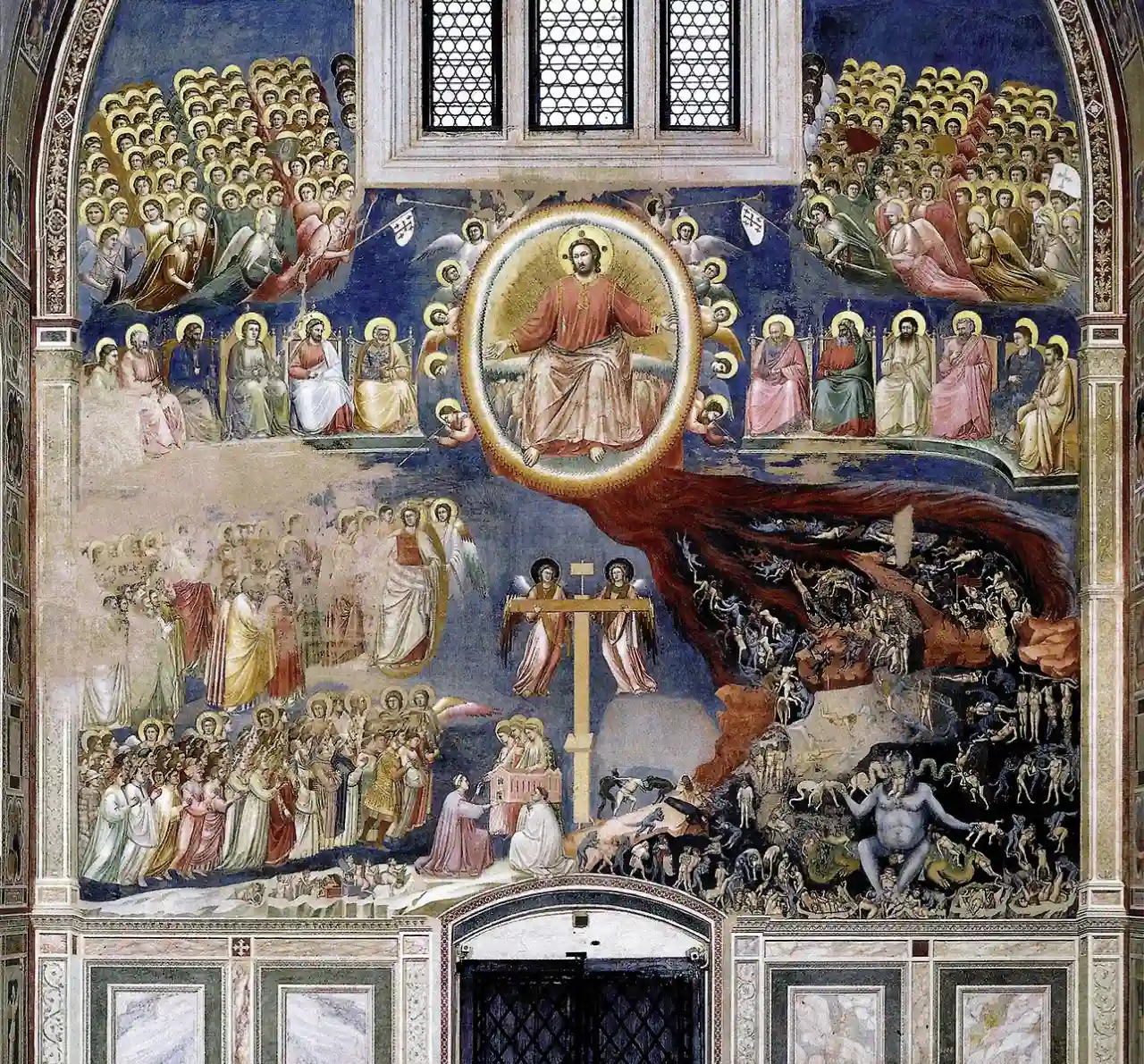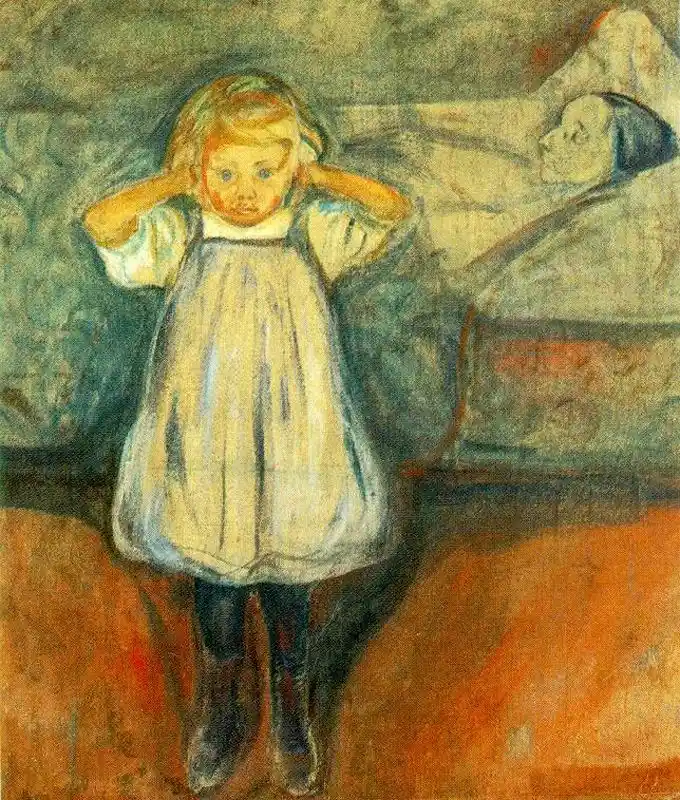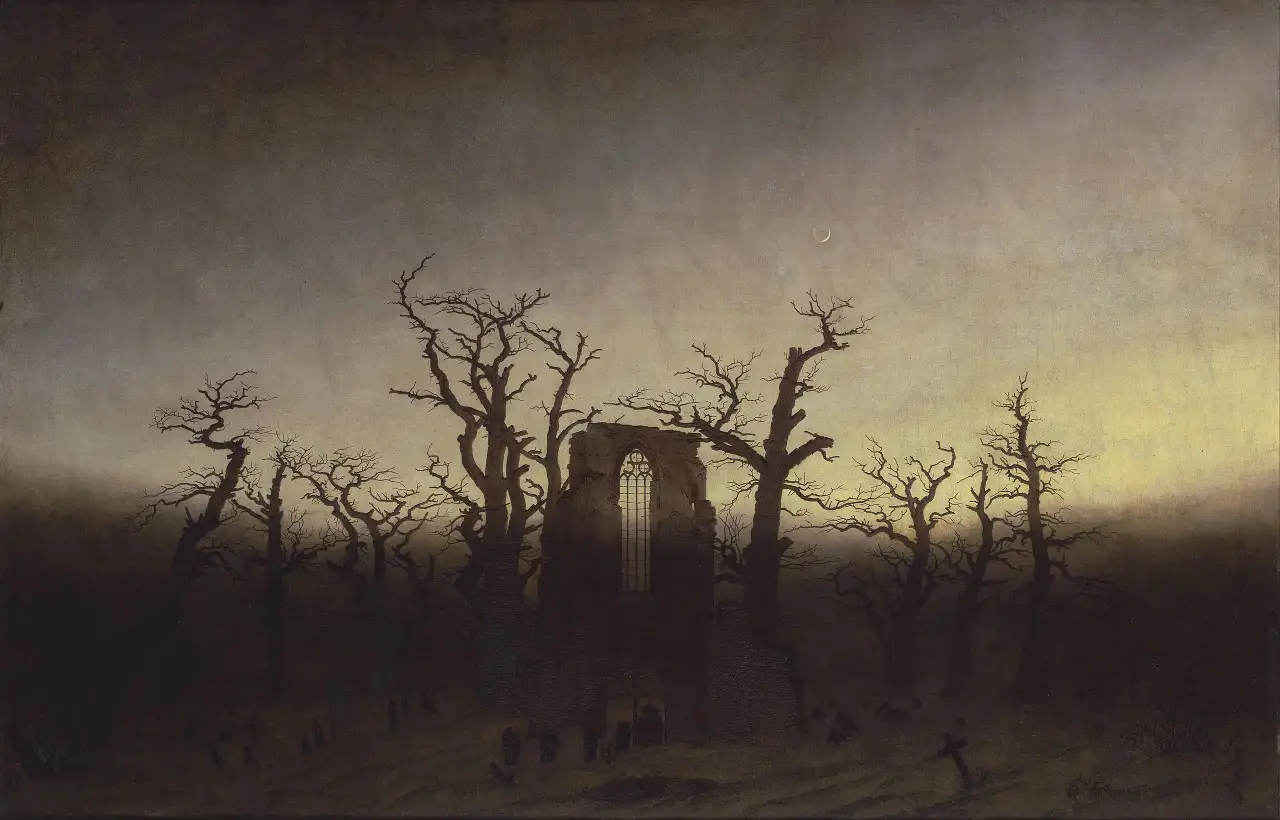Scary art is present within art history throughout the centuries. From the gargoyles on Gothic cathedrals and representations of Hell on the Renaissance Last Judgement paintings to Baroque still lifes with skulls and 20th-century modern horror, you’ll find them in all these paintings. Since Halloween is just around the corner, here are some scary and horror art pieces that represent the best spooky art has to offer.
Scary & Horror Art
1 – Vincent van Gogh: Head of a Skeleton with a Burning Cigarette
Head of a Skeleton with a Burning Cigarette is one of Van Gogh‘s most unusual paintings. He made it in 1886 while studying at the Art Academy in Antwerp. The painting could be considered a Memento Mori, a reminiscence of his poor health at the time or just a humorous representation of a serious subject.
⤷ Read more: Locations linked to Vincent van Gogh in Belgium
2 – Pieter Bruegel the Elder’s paintings
Pieter Bruegel the Elder was the 16th-century master of scary art. His paintings are filled with terrifying creatures, animal mutants and death representations. He used to show them within his artistic expression of Hell. Instead of just showing the Biblical demons, he further showed what he considered the real suffering of the lost souls.
⤷ Read more: Where to see Pieter Bruegel’s paintings in Belgium
3 – Edvard Munch: The Scream
Made in 1893, The Scream is one of the most iconic scary paintings. The person in the painting became a symbol of scream and horror, often featured in popular culture. It even has its own emoji (yes, this one: 😱). This is how Edvard Munch described the inspiration for the painting:
One evening I was walking along a path, the city was on one side and the fjord below. I felt tired and ill. I stopped and looked out over the fjord – the sun was setting, and the clouds turning blood red. I sensed a scream passing through the nature; it seemed to me that I heard the scream. I painted this picture, painted the clouds as actual blood. The colour shrienked. This became The Scream.
4 – Salvador Dali: The Portrait of Picasso
Although the subject of the painting isn’t scary at all, the way Dali portrayed Picasso belongs to the horror art. Dali was impressed by Picasso, so he made this portrait of other Spanish painter in 1947. This discomforting portrait is filled with various symbols. For Dali, personality is always more important than physical appearance in portraiture, as he explains it:
I do not paint a portrait to look like the subject, rather does the person grow to look like his portrait.
⤷ Read more: Salvador Dali locations around Barcelona
5 – Francisco Goya: Saturn Devouring his Son
The prophecy said Saturn will be overthrown by one of his children. Fearing that, he ate all of them. That Greek myth was an inspiration for Francisco Goya’s painting. He made a disturbing painting in which Saturn already ate a head and part of an arm of a human figure. Saturn looks mad with his eyes wide open, making this painting a horrifying art piece.
6 – Caravaggio: Medusa
Medusa was a Greek mythology character, a woman with hair of snakes. Anyone who would look at her would be turned to stone. Eventually, the Greek hero Perseus decapitated her. In his painting from 1597, Caravaggio showed that very moment. We can see the terror on Medusa’s face and blood dripping from her neck. Some scholars say Caravaggio painted his self-portrait here, making this painting even scarier.
7 – Claude Monet: Camille on her Deathbed
Camille was Claude Monet’s first wife, who died at the age of 32. Devastated artists painted his wife on her deathbed, immortalising her in his art piece. With the pale shades of purple and blurry brushstrokes, Camille looks as if she is between the worlds of living and dead. Although filled with love and grief, this corpse painting gives us severe chills.
⤷ Read more: What to see in Musée Marmottan – Monet in Paris
8 – Egon Schiele: Death and the Maiden
Painted in 1915, Egon Schiele’s artwork refers to the horrors he was experiencing as a soldier in the First World War. Although tranquil at first sight, the painting is filled with tension, unrest and horror.
⤷ Read more: 15 Best exhibitions in European museums in Autumn 2023
9 – Rembrandt: The Anatomy Lesson of Dr. Deijman
Rembrandt was a Dutch Golden Age painter who learned about the human anatomy by attending anatomy lessons. He painted a few of them for the guilds of surgeons performing them. The Anatomy Lesson of Dr. Deijman is fascinating because it shows a brain dissection. One of the surgeons holds the top of the dead man’s skull, and Rembrandt spares no details of that sight, creating one of the spookiest paintings in art history.
10 – Gustav Klimt: Death and Life
Although Gustav Klimt’s Art Nouveau paintings are filled with colours, happiness and life, his artwork Death and Life bears some grim symbolism. It’s inspired by the medieval depictions of Dance with Death. However, here, human society doesn’t seem to care too much about death, giving this painting a lighter tone.
11 – Hugo Simberg: The Garden of Death
The Finnish painter Hugo Simberg was interested in symbolism and rural life, depicting a combination of both in this artwork. In The Garden of Death, he showed three skeletons grooming the plants. The artwork made in 1896 is quite interesting because it combines the symbol of dying, the Death, taking care of the sign of life, the garden.
12 – Jacques-Louis David: The Death of Marat
One of the most famous paintings representing the actual person’s death was made in 1793. It depicts Marat, one of the political leaders during the French Revolution. David showed him shortly after he was stabbed to death in his bath by Charlotte Corday. Showing human death in such a raw way brings horror to this famous painting.
⤷ Read more: The best museums in Brussels
13 – Arnold Böcklin: War
Arnold Böcklin was a Swiss 19th-century painter born in Basel. He was often interested in the themes of death and mortality in his artwork. Probably influenced by Albrecht Dürer’s The Four Horsemen of the Apocalypse, Böcklin creates his own version of the future of mankind. He establishes the primordial horror art here with the fire and smoke, the characters’ tense facial expressions, and Death riding a horse.
14 – Paul Cézanne: Pyramid of Skulls
In the last years of his life, Paul Cézanne became obsessed with mortality and death. Skulls and symbols of death became much more frequent in his paintings created in the last decade of his life. One of these scary artworks is his painting depicting four human sculls in the shape of a pyramid. During that time, he also often mentioned death in his letters:
For me, life has begun to be deathly monotonous.
⤷ Read more: Impressionists in Paris
15 – Vincent from Kastav: The Dance of Death
Located in a small cemetery church of Saint Mary at Škriljinah in Croatian Istria, this medieval fresco painting defines scary art. Painted in 1474, it depicts skeletons holding hands and taking into death different members of society. From a child to a merchant, a priest and a king, they are all equal in death. Even though the merchant tries to bribe Death by giving it some money, it’s relentless.
⤷ Read more: Medieval frescoes in Istria
16 – Giotto: Last Judgement
Taking the whole wall of Scrovegni Chapel in Padua, Giotto’s famous fresco from 1306 gets to this list of the scariest paintings in art history because of its depiction of Hell. Satan, sitting in its centre, eats lost souls who are being tortured by other devils. These paintings aimed to scare the viewers and remind them to stay on the good side and not end up in Hell.
17 – Edvard Munch: Death and the Child
The second painting by Edvard Munch on this list depicts a mother on a deathbed and a child standing next to her. With it, the painter probably refers to losing his mother when he was a boy. The mother is somewhere between life and death and looks like a ghost. She is depicted in a vast contrast with a little girl, playful and full of life. However, with her serious face, we understand her life won’t be easy without a mother.
18 – Caravaggio: David with the Head of Goliath
Painted in around 1610, David with the Head of Goliath is one of Caravaggio’s most famous artworks. However, with its realistic depiction of the decapitated head, it’s also one of the scary art representatives. This painting is even more creepy because Caravaggio represented himself as Goliath. At the same time, David looks like a young Caravaggio. It’s a complicated symbolism, making this painting even more scary.
19 – Caspar David Friedrich: The Abbey in the Oakwood
Friedrich’s painting shows that not only skeletons and corpses make scary art but that landscapes, too, can give you chills. In this artwork, he showed the ruins of a Gothic abbey. A procession enters it with a coffin, showing we are observing a funeral. Although the trees are bare, we see that nature is only constant, while humans and things made by them are mortal.
⤷ Read more: Exploring Museum Island in Berlin
20 – Hans Memling: Earthly Vanity and Divine Salvation
Hans Memling’s polyptych was made in the 1480s with a complex iconography still unclear today. In its symbolism, he deals with mortality, life’s passing, and an afterlife. The Hell with a demon inside it is especially disturbing. While the representation of Death with a skeleton adds some of the horror to this painting.
⤷ Read more: Best museum Instagram accounts to follow
Scary art filled with horror and disturbing elements was present in Art History throughout the centuries. Do you have any other spooky artworks you’d add to this list? Let me know in the comments.






